
Small towns in America have always struggled to survive. One of their greatest nemesis is fire. Hiattville was no exception. Matter of fact, Hiattville had more than its share of fires. It is a wonder that it survived beyond that early 1900s.
Building a Town
Hiattville had its origins as a post office called Pawnee, which was located near Pawnee Creek. When the Missouri, Kansas & Texas Railway (MKT) railroad was coming through, the line was located to the northwest of the post office. James M. Hiatt gave land to create a town. The post office moved to that land, which was about a mile north of the Pawnee Post Office. The town was named Hiattville after Mr. Hiatt and the post office was renamed accordingly. Thus, on April 2, 1872, Hiattville was born.
It was a time when the railroad was busy, plenty of land was for sale, and people were moving into the area. Thus, Hiattville was poised for growth. By 1880, Hiattville had a population of 35. However, it soon grew to 75. By that time, the town’s business district included: two general stores, a blacksmith, a wagon maker, and a dealer in lumber and agricultural implements.
A Thousand Memories tells more about my family that lived in Hiattville.
Significant Hiattville Fires
Fire of 1886
Early on Tuesday October 5, 1886, a fire started in the harness shop in Hiattville. Within the hour the harness shop, butcher shop, and two dwellings were nothing more than ashes. Fortunately, the townspeople were able to get the fire under control before it spread further. Had the wind been stronger or the people hadn’t gotten the fire under control when they did, it is feared that other buildings of greater value would have burned. Some speculated that the entire town might have been destroyed.
Still, it was a hardship for the owners of those buildings as none of them carried insurance.
Fire of 1889
On February 6, 1889, a fire broke out in the general merchandise store in town. The store, which was called Grange store was managed and possibly owned by W. H. Deesler. The store was already beyond being salvaged when the fire was discovered at 11:30 p.m.
Seeing that the store could not be saved, the people in town went to work trying to protect other nearby buildings from the fire. They were mostly successful. Only a nearby corn crib and hay mow or stable owned by Mr. Thomas were also destroyed by the fire.
Mr. Deesler, who had been in Fort Scott, arrived on the midnight train to see his store in flames. Only $150 insurance was carried on the building. Arson was suspected as the lock was found afterward unlocked and no fire had been lit in the store that day.
This was not the first case of arson in the area. In 1878, fire destroyed the D. D. Rall home 1.5 miles south of Hiattville with nothing saved. That early fire was also believed to be arson.
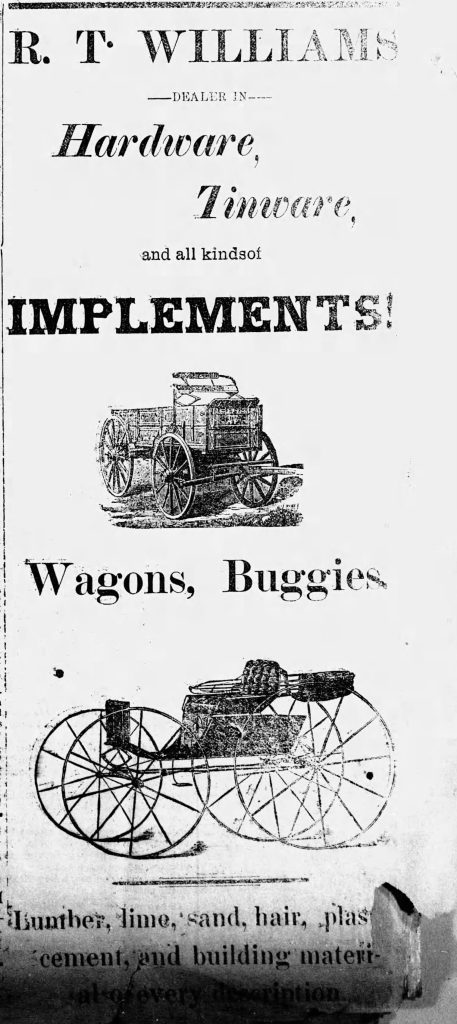
Fire of 1894
Early on the morning of November 16, 1894, a fire started in the rear part of A. W. Fellows Drug Store, possibly from a stove. An engineer on a train coming through town spotted the fire between 5 a.m. and 6 a.m. At that point, the fire was already consuming the drug store building, which was owned by O. L. Settles of Ft. Scott.
Upon the alert of a fire, the citizens of town, which numbered approximately 500, formed bucket brigades to fight the fire. However, they were greatly challenged as the wind was high and pushing the embers toward other businesses, which were mostly frame structures.
Besides the drug store, the fire went on to consume R. M. Wallace’s livery barn and Robert Pool’s residence. Then the fire jumped the road and burnt R.T. Williams’ lumber yard, implement sheds, and 1,000 bushels of grain. The citizens of the town worked tirelessly to save R. M. Wallace’s store and R. T. William’s hardware store. To this end, they were successful.
The Losses
The drug store was a complete loss with the loss estimated at $3,500 split between O.L. Settles and A.W. Fellows. O.L. Settles lost not only money, but also opportunity. He had left his position in Ft. Scott and was in the process of getting full control of his Hiattville property. His plan was to trade his Hiattville property for a drug store in Kansas City, Kansas. As such, he had allowed his insurance to lapse only fifteen days earlier. Now, he was out of a job and had no property to trade for the Kansas City drug store.
R. M. Wallace had 2,000 bushels of oats destroyed along with the barn. His loss was estimated at $1,100. Additionally, a man from Ft. Scott had his team and medicine wagon in the barn at the time of the fire. He succeeded in saving the horses, but his wagon was destroyed and in the effort, he received burns on his face and hands.
The other losses included the Pool residence, which was valued at $650, and the lumber yard and sheds, which was estimated to be a loss of between $1,500 and $2,000.
Fire of 1905
 State of the Town
State of the Town
Over the years, people and businesses come and went. For instance, one newspaper had come and gone. Likewise, my Great-grandpa Peelle had owned a carpentry shop in town, but sold out and moved to a farm west of town only a few months before the 1894 fire. Read A Carpenter and a Farmer to learn more about the Peelle family in Hiattville.
However, Hiattville had generally grown. Around the turn of the century, the small town had three general stores, two blacksmith shops, a livery, shoemaker, hotel, cheese factory, grain elevator, a hardware store, a restaurant, an insurance agent, a railroad depot, and three doctors. Other businesses of the era completed the business district. And, by 1905, Hiattville was becoming quite progressive having formed the Hiattville Mutual Telephone Company.
Tragedy Strikes
Unfortunately, the town suffered a tragic fire on March 1, 1905, which destroyed several of the businesses. Charles Yager left his drug store around 10:00 p.m. The fire started in the store around 10:30 p.m. It was thought that perhaps some oils or chemicals exploded causing the fire.
Fire Detected
When the fire was detected, the entire roof of Yager’s Drug Store, which also included a soda fountain, was on fire. It was impossible to save anything in the store. Mr. Yager’s loss was estimated at $4,000 with insurance covering $2,000 of the loss.
High wind spread the fire quickly through the small town. Next to burn was Mr. Newton’s barber shop. Reports on what was saved varied with one saying nothing was saved and another saying he was able to save all the contents except a large mirror. His loss was set at $500. He was insured.
Not Under Control
Still, not under control, the fire wiped out A.M. Routh’s mercantile, which also included the post office. The upper floor of the building was a hall that was used for meetings by all the lodges. They were able to save the first class mail, Mr. Routh’s books, typewriter, several hundred dollars worth of goods, and his uncle, who was sleeping. inside. The furniture, second class mail, and most of the stock were destroyed by the fire. Additionally, everything in the upper level was burnt.
A.M. Routh had $4,400 insurance on the stock with one company and had additional insurance with other companies on the stock and building. His loss before insurance was estimated at $10,000 for the stock and $2,000 for the building.
The fire then headed to E. E. McCord’s blacksmith shop. He was able to save only a few of his tools. The building was only estimated to be worth $150. However, the tools and machines destroyed were valued at $2,000. He carried no insurance.
Still More Losses
The citizens of the town, who were joined by people of the surrounding countryside that saw the glow of the fire, fought tirelessly to put out the fires started by embers that flew quickly in the brisk wind. However, they were not able to save W. H. Routh’s flour mill. The only thing saved was between one-half and two-thirds of a pile of corn and that corn had been damaged by the fire. The loss from the flour mill was estimated at $2,000 and the facility was only insured for a small amount.
Ed Hall also lost his business. For him, this was the second time his livery stable had been burnt out. The first was in Pawnee (Anna). He would encounter fire again in Redfield the following year and just escape another fire in Bronson later on. In this fire, he lost the building and hay, but was able to save his horses and buggies. His loss was $700. Since the insurance company had refused to pay when he had the fire in Pawnee, he had become wary of insurance and had none on his livery in Hiattville.
The last business to burn was the Arlington Hotel, which was owned by George Howell. The hotel had twenty furnished rooms. The people of the town had time to get the furniture out of the hotel. However, they erroneously thought that the fire would not reach the hotel. Thus, they had not removed the furniture. The loss was estimated at $2,000 for the furniture and $2,500 for the building with only a small amount of insurance.
Saved
The townspeople finally started to get the fire under control around midnight. By then, the town had lost seven businesses. They had managed to save the nearby homes of Dr. Clark, Charles Gray, and F. J. Showalter. To save the homes men got on the roof and used water handed up to them to put out fires as soon as the embers landed. On Dr. Clark’s house there were so many embers and the heat was so intense that Clayton McClelland had to cover himself with a wet blanket to keep fighting the fire.
The citizens of the community were also able to save John Lander’s barn. A ton and a half of hay burned only two feet away, but they kept the barn from burning. Likewise, they saved Scott Wilson’s mill and the section building. Despite being a quarter of a mile away, an ember had ignited them. Fortunately, the fire was seen before serious damage occurred.
The Prediction
This was the third time in fifteen years a building had burned on the corner where Routh’s store had sat. Oddly, it was claimed that eighteen years prior (1887) a medium had gone into a trance and predicted that three buildings would burn on that corner. She also predicted that after the third fire, no more fires would happen on that particular lot for the next 100 years. Since there had been three fires, speculation was that it was safe to build on that lot and that the owner wouldn’t even need to waste their money on fire insurance.
Recovery/ The Aftermath
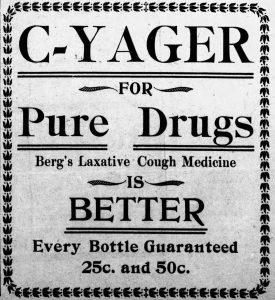
After the fire, John Hartnett reported on the decrease in taxable property in the township. However, the townsfolk rallied, and many found ways to keep their businesses open. A. M. Routh, used his “old” building temporarily while he built a new store. It is unknown if he believed the prediction of the medium or not, but he did rebuild on the same lot. Mr. Newton’s solution was to move his barber shop into his home.
Not everyone, however, decided to stay in Hiattville. For instance, E.E. McCord moved his blacksmith shop to Pawnee (Anna). And, Mr. Yager was considering going back to Kansas City despite not having property to trade.
However, new businesses sprung up. Bertha Wallace and Mrs. J. C. Landers noticed that since the fire, no hats were available for sale in Hiattville. Thus, they decided the town needed a new millinery store. So, they headed to Ft. Scott to purchase stock for a new store.
1906 Fire
On October 18, 1906, Mr. Aidlock/Aldlot’s family was wakened by unusual howling and actions of their dog. When looking to see what the problem was, they discovered fire in the eaves of the Christian Church next door. Unfortunately, they didn’t have a ladder high enough to reach the eaves.
Soon, however, people arrived with ladders, but it was too late. An ember had gone down the cupala (small structure on top of the building) and the building was engulfed in flames. Mr. Aidlock’s blacksmith shop also caught fire and could not be saved despite heroic efforts of the townspeople.
Despite the losses, the town was fortunate that the wind was from the west and was light. Thus, no embers reached any other buildings. People speculated that if the wind was stronger or blowing from a different direction that the loss would have been much greater.
A. M. Routh owned the church. It had not been used in that capacity for several years. However, it had been used recently as a town hall. The building was not insured and was not rebuilt. Two years later, Mr. Thompson of the Hiattville State Bank built a new home on the property.
Mr. Aidlock’s loss was $1,500, but it was fully insured.

Fire of 1910
The previous fires had stopped the growth of Hiattville. By 1910, although it still had stores, a blacksmith shop, post office, and more, the number of businesses in town had dropped. Likewise, the population had fell to 250.
Strode Brothers General Store
On February 23, 1910 about 10:45 p.m. fire was discovered in the wareroom (store room) of Strode Brothers General Store. The exact circumstances of the discovery vary.
Two Versions of The Story
The Hiattville News, in their very last issue ever printed, indicating that C. W. Strode was at the store. He had just recently checked the store over and all appeared to be well when he heard an odd sound. He thought it was someone at the front door, but alas it was fire in the wareroom.
On the other hand, the Fort Scott Tribune and Fort Scott Monitor reported that Mrs. Strode discovered the fire. Her husband and two other men were in the main store, but hadn’t smelled the fire. When Mr. Strode went to the wareroom and opened the door, the flames were right upon him.
Fighting the Fire
They immediately sent the fire alert and worked to save the post office items. They were successful in that endeavor. However, they lost most of their stock and the building. The building was estimated to be worth $2,000 and the stock worth $12,000. Mr. Routh owned the building and had $1,000 in insurance. The stock loss fell upon the Strode Brothers who were insured for half of the loss.
As soon as it was clear that the Strode store could not be saved, the people of the town turned their attention to saving Lander’s General Store and the lumber yard. With lots of hard work, they were successful.
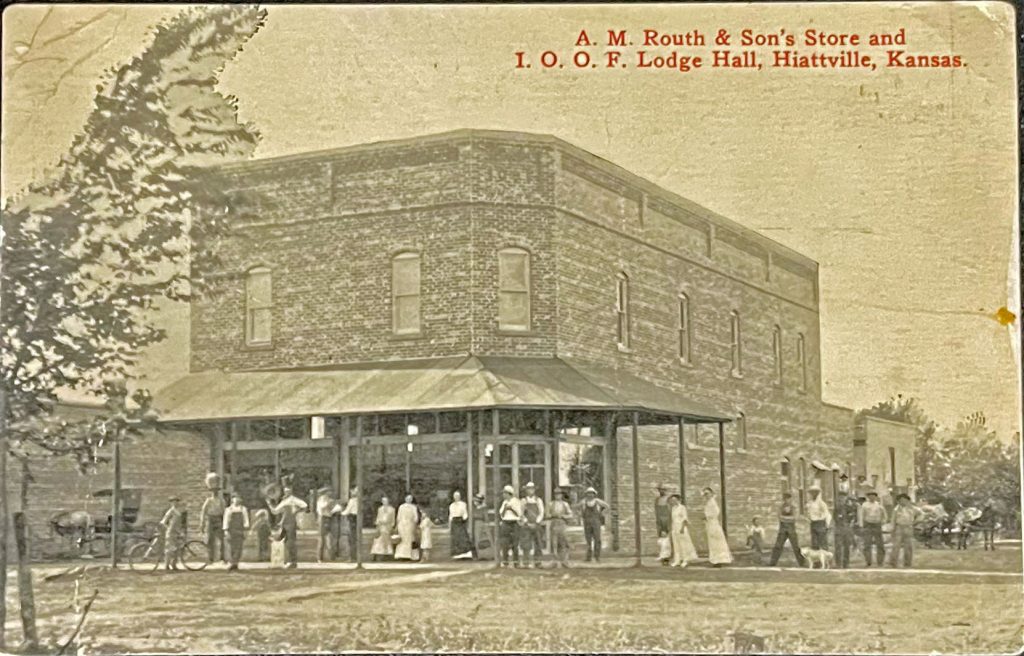
The origin of the fire seemed to be a mystery. The wareroom did contain a heat stove, which was lit at the time. It was to keep a large inventory of potatoes from freezing. However, the fire appeared to originate at the north end of the room and the stove was at the south end of the room.
Despite the significant loss, Mr. Strode, who had been doing a lot of business in the area, immediately began considering rebuilding a bigger and better store.
1911 Fires
Johnson & Cordts’ Homes
On June 13, 1911, Mrs. Lem Johnson, who lived near Hiattville saw flames at her neighbor Henry Cordts’ house. She headed to their house to alert them. When she looked back toward her own house, it was also on fire. The Cordts family was not home to help and both homes were a total loss.
One must suspect arson although it is possible that something caught on fire at the neighbor’s house and an ember landed on her own. Yet the fact that a large barn near the two houses has burnt only four weeks prior raised more concern. The barn fire burnt the building, grain, hay, a colt, and a mare.
Mosley Home
The very next day (June 14, 1911), the O. J. Mosley home in Hiattville was completely destroyed. The story was that a roomer dropped a lighted match and the house caught on fire. However, it seemed that people questioned that story.
The fire destroyed the home, but the goods on the main level were saved. Everything on the upper level was destroyed. The loss was estimated at $600 for the house and $300 for the goods.
1913 Fires
Livery Barn & More
Around 10:30 p.m. March 31, 1913, members of the band were on their way home after practicing at the school. They noticed flames at John Fox’s Livery Stable. As they formed a bucket brigade, they tried to get the horses out. However, the fire was too big to allow them to safely go very far into the building.
Soon, people from all over town arrived and joined the bucket brigade. However, the fire was too big to quickly get under control. The entire building and all of its contents were destroyed. They were only able to save two of the eight horses that were inside. The loss was estimated at $2000 with only $800 covered by insurance.
The home of Pat Kelly, who was the rural mail carrier, burnt next. Fortunately, the townspeople were able to get most moveable items out of the house. Mr. Kelly carried insurance to cover his $800 loss.
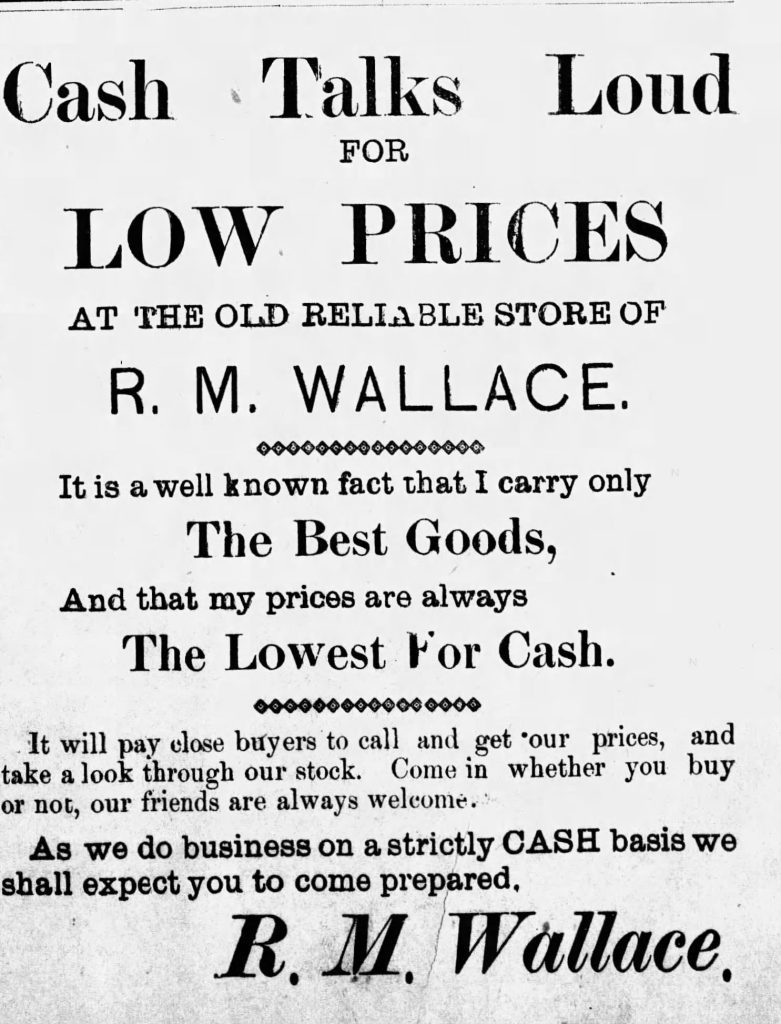
The Wareroom
Next in the path of the fire was Wallace’s wareroom. In this case, it seems to be a storage building that wasn’t attached to the store. It contained oils and gasoline, which were stock for his store that he kept separate, fortunately, from the store. Knowing what was in the building and that the hardware store was only a few feet away, the town put up a mighty fight to beat down the fire before the oils and gasoline caused it to explode and become even bigger.
They kept the fire away as long as they could. The fire did eventually make its way to the wareroom. Explosions did occur, but the effort had helped contain the fire enough that the explosions were much smaller than feared. This was the last gasp for the fire and the people of the town were able to save Wallace’s Hardware Store. His loss was estimated at only $100.
How the fire started was a mystery. It was determined to have started in the northwest corner of the livery barn. However, nothing stored there was thought to have possibly started a fire.
Hotel Fire
Between 8 p.m. and 9 p.m. on August 2, 1913, fire was discovered in Charles Yager’s Hiattville Hotel. Fortunately, the fire was discovered before the fire got too large. The people of the town got the fire out in a few minutes. However, the building still received substantial damage. Had the fire gotten any larger before it was discovered, the building would have been a total loss.
The fire appeared to have started in a closet that contained “bed clothing.” Among the items were a number that contained feathers. The only guess at what occurred was that maybe the large number of feathers in a small stuffy space led to spontaneous combustion.
1932 Fires
Routh’s Garage
On March 10, 1932 about 10 a.m. fire was discovered in I.T. Routh’s garage. The townspeople were able to get the car stored inside out. However, the building and most of the tools and other items stored inside were destroyed. Additionally, while trying to save the garage, Mr. Routh received burns on his hands and face. They were described as painful, but not serious.
Once it was clear that the garage could not be saved, the focus shifted to the nearby lumberyard. It was feared that the intense heat combined with flying embers would catch one of the buildings or the lumber on fire. Fortunately, the townspeople’s hard work paid off and the lumberyard was saved.
Lumber Yard and More
On March 31, around 3 a.m. Mrs. Henry Baker woke up and saw the glow of a fire lighting up her bedroom. She quickly woke her husband and he alerted others in town. By the time they arrived at the scene of the fire, I.E. Morrison’s lumberyard, sheds, and lumber were all ablaze. There was little they could do to save the business.
Williams’ Property
Seeing that the Earl WIlliams’ place, currently occupied by the H. J. Lundberg family, was in the path of the fire, men rushed to alert them. The family was asleep and had no idea that a fire was burning so close by.
The townspeople managed to save the home by watering it down. However, the coal house, chicken house, and garage at the back of the Williams property were destroyed. Mr. Lundberg lost 53 chickens in the incident. Burr Armstrong had a bigger loss as his brand new Plymouth coupe was parked in the garage that burnt. It was a total loss as were the other items stored inside.
Williams’ building, which had previously housed Williams Hardware Store but was currently unoccupied, also caught fire. It had recently been rented, but luckily nothing had yet been moved into the building. Fortunately, the townspeople were able to contain the fire to the back of the building. Although the building sustained substantial damage, it was not completely destroyed. By the time the fire was done growing, the fire had covered about a half a city block.
When & How
The exact time and location the fire started was unknown. Several Hiattville men had returned from Ft. Scott about 12:15 a.m. They had passed right by the lumberyard on the way to their homes. None of them had seen anything suspicious or smelled smoke at that time. Thus, it was believed that the fire must have started after they reached their homes.
Furthermore, it was believed to have started at the western edge of the burn area. Wind out of the west was believed to have propelled it eastward causing it to grow in size.
The damage was estimated to be between $15,000 and $20,000.
1954 School Fire
In 1954, William Koppa, the custodian of the Hiattville School, built a fire at the school. As he headed home, he happened to look back and saw sparks on the roof, which started two fires. However, he had no ladder that reached the roof. So, he needed help.
By now, the town could alert people of a fire via telephone, which is what he did. People nearby soon arrived at the school with pails and ladders. They formed a bucket brigade and saved the school. Only a small area of the roof was damaged and insurance covered the repairs. Had, Mr. Koppa not looked back towards the school, there might have been a very different outcome.
1955 Church Fire
On August 20, 1955, the Methodist Church, which was started Oct 25, 1884 and which had just undergone renovations, was reduced to ashes. It was insured for $5,500 and the church had a $500 improvement fund. At the time of the fire, it was estimated that the new church would cost $12,000.
A new church was built on the site and was dedicated a year later on October 28, 1956. Classrooms and a basement were added in 1967-1968. Services are still held at the church and it has been a gathering place for our family and the community for many years.
Family Fires
The Big House
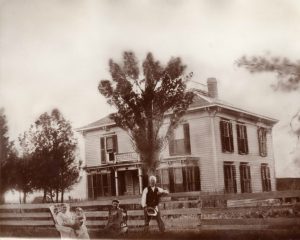
In 1894, William J. Peelle, his wife, children, and parents moved to a house west of Hiattville. That house was referred to as “the big house.” Something occurred related to mortgages, which resulted in the family moving back to their earlier home north of Hiattville.
The Davis family then began moving into “the big house.” They moved most of their furnishings into the house, but were still waiting for the last load that had gotten stuck in the mud. Ruth Alley, whose husband was the foreman and who was good friends with the family was doing laundry when the house caught fire from the kerosene powered washer.
Again, the Peelle family lucked out, as they moved before the house burnt. The Davis family was not so lucky.
Later, Mount Hope School would be moved to the property and located near the ruins of “the big house.” Don and Kay (McCracken) Davis and family would live in the school turned house for many years.
The Homeplace
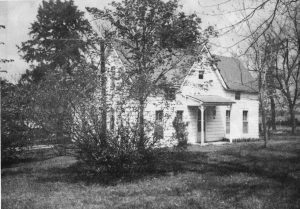
In 1993, Dewey and Jackie (Corfman) McCracken’s house, also known as “the homeplace,” caught on fire. They caught it early and on instinct called Dad. (I think before calling the fire department.) He didn’t know anything except that they had a fire. When he got there, he could see smoke coming out from under the eaves. They had thought the fire was in the chimney, but Dad realized it was in the attic. By the time the fire department arrived, Dad had the fire under control. They were fortunate. The damage to the house was repairable and most of the contents were salvageable.
tidbits about Other Fires Around Hiattville
- A prairie fire on Charles Warren’s destroyed 10 acres of hay.
- In late October 1876, a freight train started a prairie fire near Hiattville. Mr. Rall lost hedge and rail fences. Teachers and students had to fight to keep the fire away from Mt. Hope School.
- Mar 2, 1914 at 7:30, Sam Henning, who lived 4 miles north of town lost his house. The only contents saved were those in one room. His daughter was baking bread and the fire was really hot. She went to the kitchen to check on the bread and the roof was on fire. They were getting ready to retire for the evening and lost most of their clothing and their shoes. Mrs. Henning was ill and had to be carried out on a stretcher. They thought the fire was from a defective flue.
- In 1922, Lon Crays’ home caught on fire while the family was at Sunday School. Almost everything burnt that was in or near the house. The house and barn were owned by Curt Deering.
- On July 13, 1910, Mrs. Chambers was home alone when she suddenly realized the roof of her house was on fire. The family’s six-room home two miles west of Hiattville was a complete loss. Very little furniture was saved as Mrs. Chambers could only get out items that she could carry by herself. The loss was $2000 with only $800 insurance.
Hiattville Today
Today, Hiattville is only a bit more than a ghost town. The Methodist Church is still in use, but the businesses are all gone. Even the railroad tracks have been removed. Quality of roads, automobile travel, and other mechanical and technological advances helped kill small towns like Hiattville. Still,the fires contributed significantly to the decline of the town.
Afterward
As I was finishing this article, I found another articles about fires at Hiattville. That article is titled “The Fiery History of Hiattville” and was authored by a K-State student. (Download the pdf)
Featured Image: Hiattville map showing land ownership. Pink – Passco Peelle; Green – William J. Peelle; Blue – Walter Jury; Turquise – Wilburt Jury; Lavender – Early hotel and likely where Thomas Harnett lived given they ran a hotel; Orange – Grocery store. Map Source: Historic Reflections of Bourbon County, Kansas.
Prompt: Fire
#52ancestors52weeks
 State of the Town
State of the Town